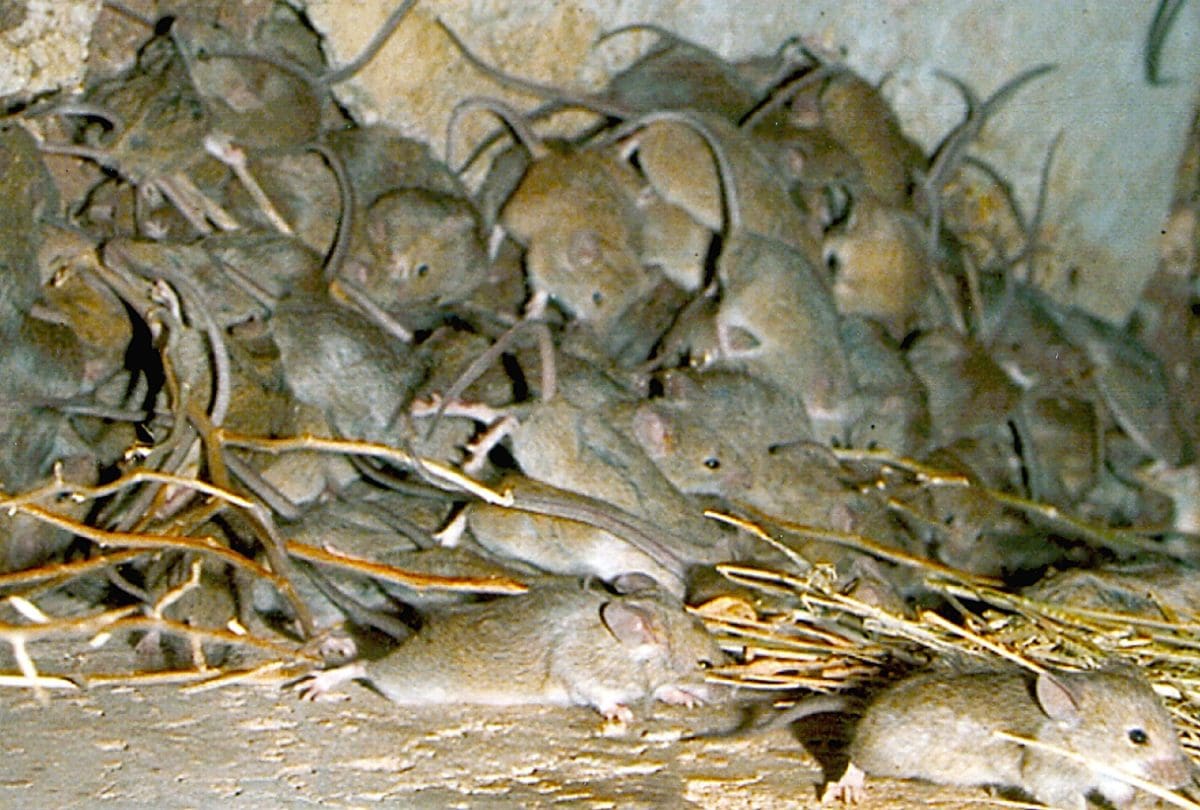
Mice can start breeding at six weeks of age, and produce a litter of up to 10 pups every 19-21 days. Photo: CSIRO
WANT to curb your mouse population? Get rid of the blokey mice. Ditch the mouse man-cave.
Young male mice (properly known as bucks) socialising with other bucks produce more and better-
breeding sons.
Peer competition gives the extra grunt, according to research from the University of Western
Australia.
“We found mice fathers who matured around a lot of other males produced high-quality sperm with greater fertilising potential than fathers who matured around a lot of females,” UWA’s Centre for Evolutionary Biology Renée Firman said.
“Significantly, these differences were also observed in the sons, despite the sons maturing under
standard ‘common-garden’ conditions, demonstrating that the differences in sperm quality could
only have arisen via non-genetic inheritance,” Dr Firman said.
“We have shown that the social environment experienced by fathers during sexual development can
influence their own sperm quality, as well as that of their sons.”
Studying the descendants of wild-caught house mice, the researchers compared bucks raised in a
high-male density (competitive) or high-female density (non-competitive) environment.
They used a specialised genetic technique to measure the proportion of X and Y chromosome sperm, the so-called “sperm sex ratio”.
“We found that males exposed to a competitive environment during development produced larger numbers of Y sperm compared to males subjected to a non-competitive environment.”
Want to get rid of mice? Stop broadcasting State of Origin in the machinery shed – switch on Taylor
Swift or Richard Clayderman instead.
However, Dr Firman’s work also showed that young males raised in a high-female environment grew
up to enjoy “elevated mating frequency”, but without the Y chromosome superiority, it looks
like a case of bucks fizz.
Dr Firman’s research, supported by the University of Maryland in the US, is the first to demonstrate
intergenerational, non-genetic inheritance of sperm quality in bucks.
“Intergenerational plasticity is a previously unconsidered aspect in invasive mammal fertility
control.”
Earlier work by Dr Firman also suggests female availability influences the strength of sperm
competition in rodents.
Her research, supported by SA’s Flinders University and Columbia University, US, along with the
Australian Research Council and the Spanish Economy Ministry, co-related the distribution of
females and sperm competition, “or essentially male-male competition after mating,” she said.
“Ultimately, patterns of female distribution will affect the strength of sperm competition by
dictating the extent to which males are able to prevent female remating.”
Her study also found that testes size increased with decreasing mating season length; the shorter
the mating window, the bigger the equipment.

HAVE YOUR SAY